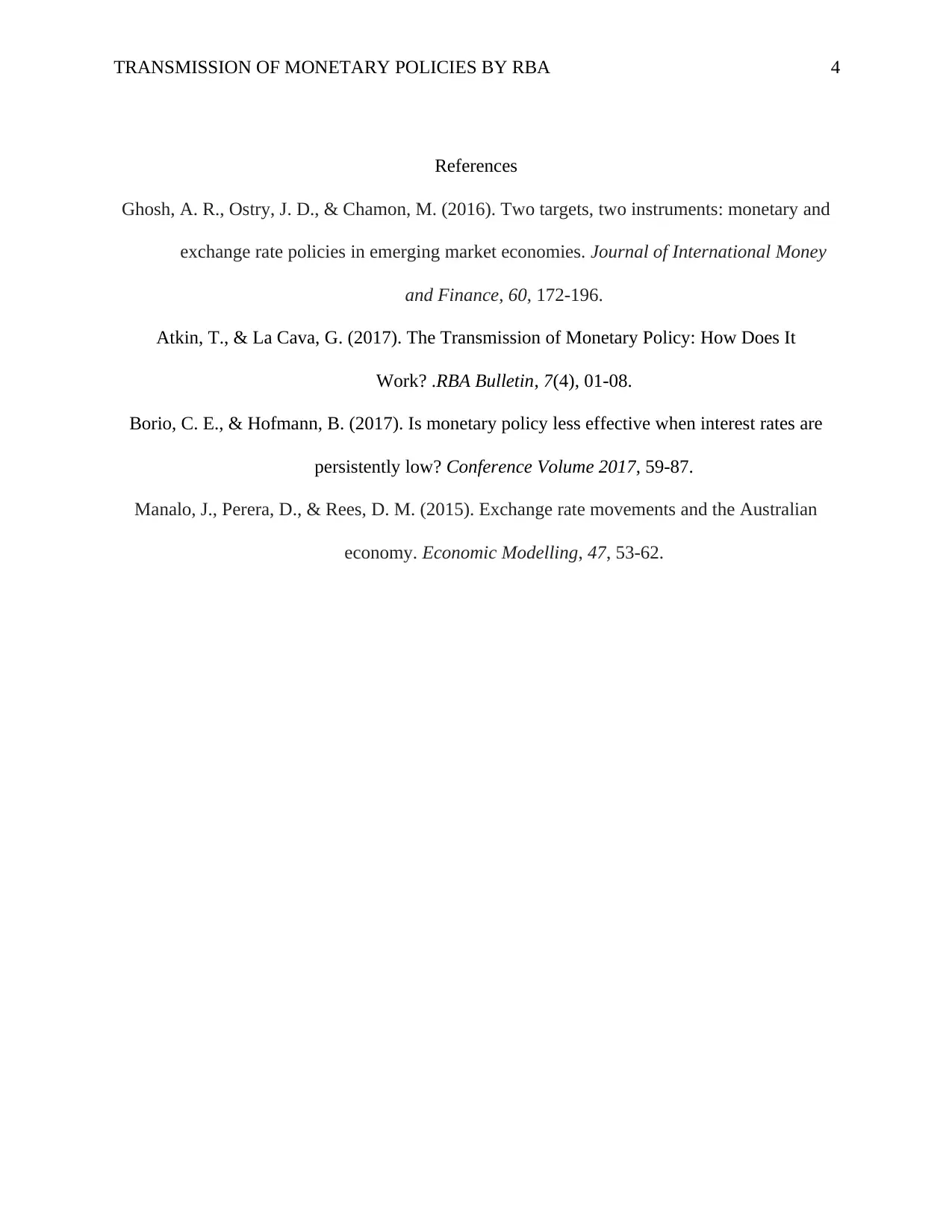RBA Monetary Policies: Transmission Mechanisms & Rate Dynamics
VerifiedAdded on 2023/06/03
|4
|684
|296
Essay
AI Summary
This essay delves into the transmission of monetary policies by the Reserve Bank of Australia (RBA), focusing on the interplay between interest rates, exchange rates, and inflation. It explains how the RBA manages these factors to maintain economic stability, highlighting the challenges in balancing them due to their complex interconnections. The essay discusses the impact of inflation on currency value and exchange rates, and how the RBA uses contractionary policies to control inflation by adjusting interest rates and bond prices. It also touches on the concept of purchasing power parity and how exchange rates adjust to balance purchasing powers between countries. Furthermore, the essay uses statistics to demonstrate the practical effects of financial policies, such as the impact of cash rate reductions on GDP and inflation. Finally, it explains how exchange rates influence inflation through import prices and local producer behavior.
1 out of 4











![[object Object]](/_next/static/media/star-bottom.7253800d.svg)